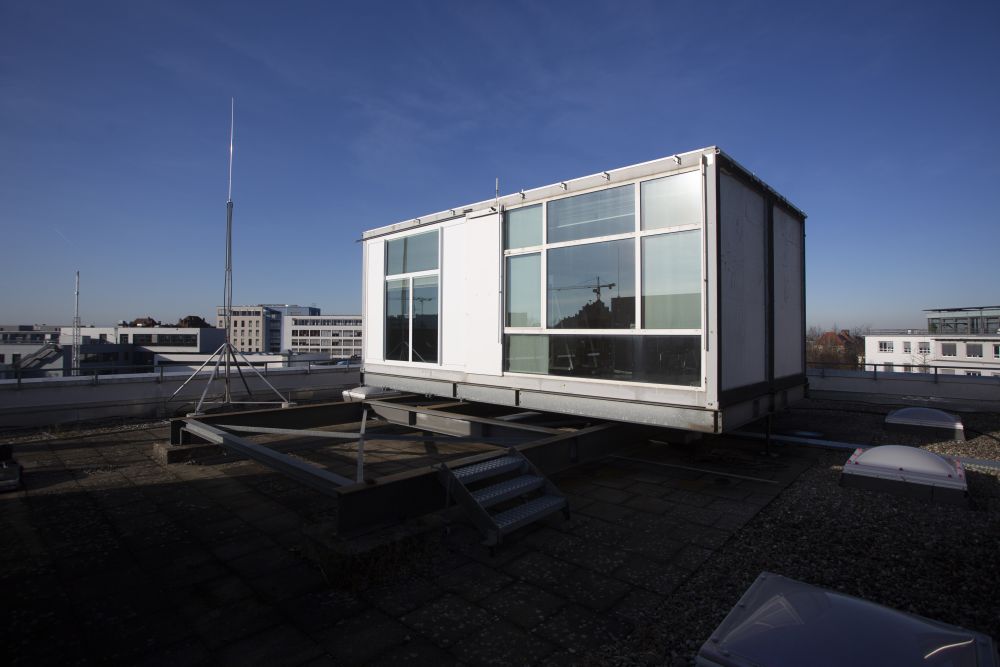| Duration: | 01/2021 - 12/2024 |
| Contracting Authority/ Sponsors: | Federal Ministry for Economic Affairs and Climate Action |
| Project Partners: | Priedemann Facade-Lab, Transsolar Energietechnik, Warema (external partner), Schüco (external partner) |
| Project Focus: |
Synergy Façade
Research into exhaust air concepts between interior blinds and glazing to save energy and costs while at the same time increasing thermal comfort


Up to now, the exhaust air in mechanically ventilated buildings has been extracted at various points in the interior. In many buildings, internal roller blinds are also used for glare protection. With the synergy façade approach, the exhaust air is extracted between the internal roller blind and the glazing. This reduces the temperature of the internal blind, which has a positive effect on the thermal comfort of the building's users. At the same time, the exhaust air can transport a large part of the solar gains out of the building. This helps against overheating of the building and the use of air conditioning can be reduced, improving the environmental footprint of the building. In addition, the system is based on the intelligent combination of relatively simple components. The low and cost-effective use of resources compared to other façade systems saves investment costs, reduces cleaning and maintenance costs. At the same time, the shallow façade depth of the synergy façade allows for maximum utilization of space, thus maximizing rental income based on maximizing usable space, for example.
In the Synergy Façades project, a large-scale façade demonstrator is being developed on the basis of application scenarios to be worked out. This will be measured in order to create and validate a novel simulation model that represents the specific features of the synergy façade. This model in turn will be used to investigate the application scenarios defined at the beginning in a holistic manner, taking into account different climatic regions and building services concepts. The results are continuously compared within the consortium and among associated partners as experts, and published externally. Fraunhofer ISE is responsible for the optical and calorimetric measurements of the synergy façades, the calibration and the validation of the synergy façade model and it will generate the comparison matrix on synergy façade use cases.
For a research institution, the economic benefit after the end of the project, but also during the project, is to provide R&D services. The solutions, computational models, simulation tools, catalogs of criteria and decision-making aids or technological specifications developed at the end of the research project represent the ideal tools for convincing partners in the construction industry of synergy façades and their functionality, and for planning and individually implementing them on a project-specific basis. With the expansion of our CONTINENT test facility, characterization is also commissioned by manufacturers of facade technology and relevant physical processes are scientifically investigated. If open questions arise during the course of the project or ideas emerge which justify a complementary research or development project, Fraunhofer ISE will offer such research work, either as a purely industrial commission or with public funding.